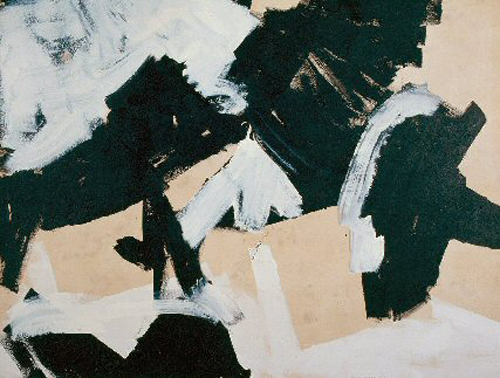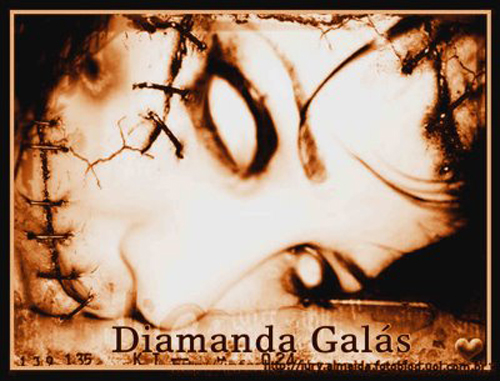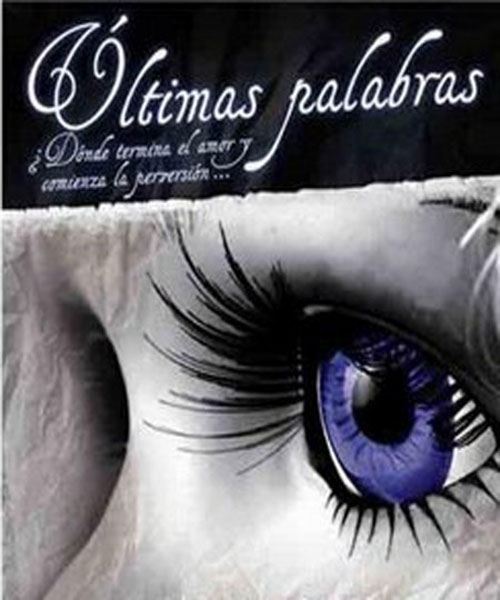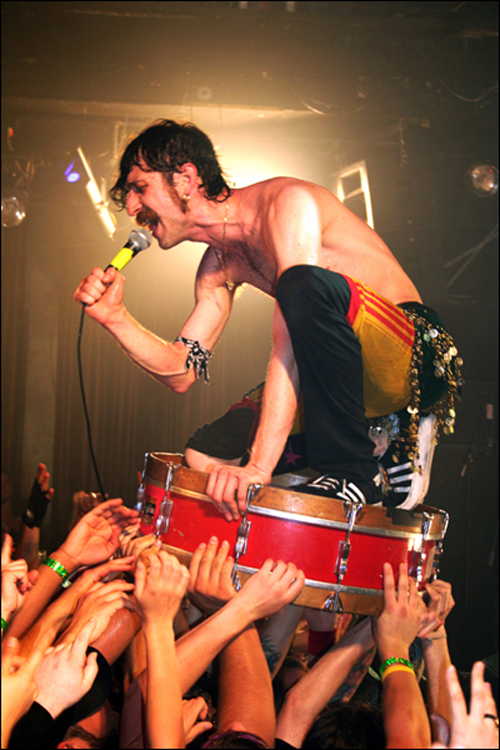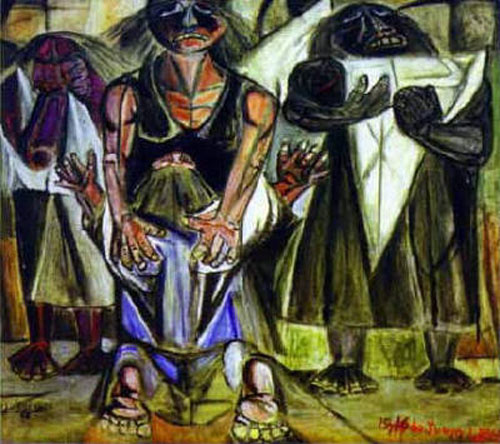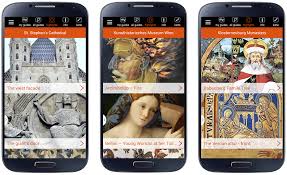The Only Team
Ourivesaria Aliança is a shopping centre in Lisbon that specializes in jewelry. You have to visit it if you´re in the city.
Mónica Boixeda
Pap´Açorda is an ideal restaurant for those tourists who are lovers of traditional Portuguese food and its culture.
Mónica Boixeda
Chapitô is the restaurant with the best view of the Alfama and young people visit it daily to enjoy the music and to eat the best tapas.
Mónica Boixeda
Eleven is one of the trendiest restaurants in Lisbon. Inside you can enjoy the best gourmet food in the whole world.
Mónica Boixeda
On April 15, the CAM opens the exhibition “Nothing to do nowhere to go”, which will present the work of Portuguese artist Vítor Pomar. For the first time the CAM in Lisbon will present the work of one of the most iconic artists of Portugal, Vítor Pomar born in Lisbon in 1949. In this exhibition entitled “Nothing to do nowhere to go”, which opens on April 15 and will remain on display until June 12 and where can see some of his most interesting works devised by the artist between 1974 and 2010. With a special emphasis on the visual side of his work the CAM will present video art and film works, which will be displayed in the “Multipurpose Room”. Pomar studied at the Escola de Belas-Artes in Oporto, Portugal in 1966 and 1967. His first exhibition took place in the Gallery Guadrante in 1970, the same year he turned his back on his native country to live in Holland. And it was in the 70´s when Pomar began experimenting with visual media, which came to serve as a conceptual basis for artistic practice, which investigates the mutual infiltration between cinema and photography. Pomar estudió en la Escola de Belas-Artes en Oporto, Portugal en el 1966 y 1967. Su primera exposiciòn tomò lugar en la Galeria Guadrante en 1970, en el mismo año que dió la espalda a su país natal para vivir en Holanda. Y también fue en los años 70 cuando Pomar empezó a experimentar con los medios audiovisuales, lo cual le llegó a servir como base conceptuale para su práctica artística, en la cual indaga...
Ara
Numerous studies have tried to find the differences between male and female brains. And although many differences have been found, they are still far from being objectified and categorized. Our genes are not equal; men have a Y chromosome that female mammals do not. This Y chromosome has been named the Adam chromosome, inherited from the father as opposed to the Mitochondrial Eve chromosome inherited from the mother. An experiment conducted by Melisa Himer in 2002 revealed some facts that might call into question all equal education patterns. Very young individuals were presented toys with marked sexist connotations: a truck and a ball, a doll and a frying pan. The males chose the car and the ball while the female, the doll and the pan. And one of the most amazing things of this study is that these individuals who took this decision were not human, but primates. But the differences between 2 sexes sometimes need not be greater than those between members of the same sex. We have many open topics in neuroanatomy; for example, that men have more white matter in the brain and women have more grey matter. In neurochemistry, we have different serotonin answers when we are under stress. In neurofunction, males are characterized by having more developed left side brain, i.e. rational side, and women, the right side, which is the emotional. But haven’t we ever seen aggressive women, depressed men, and don’t we know now that there are many more types of intelligence than just the rational and emotional? All these topics may have skewed too much both the medical community and...
Mónica Boixeda
This is one of those concerts you have to go to at least once in your life – and I´m sure that anybody who has already had the pleasure of the experience would agree with me. As well as being an undisputed music diva, Diamanda Galás is an artist like no-one else, and her three and a half octaves of voice, and power of musical interpretation are just two of the reasons not to miss out on this show. The career of the American-Greek singer kicked off officially in the beginning of the 80s. Her extraordinary voice, which she describes herself as “capable of the most terrifying sounds,” has taken her down a number of musical paths – from Jazz, to rock, via opera, blues, etc. All of these styles get the treatment of her unique voice – and the drama, groans and shouts which have become characteristic of her identity as a vocalist. Throughout her extensive career Diamanda has never ceased to amaze, with her particular way of feeling the music, the themes which many have described as dark – and her humanitarian work, which is where her latest show comes in. In Leiria on the 16th of April, she will perform “The Refugee,” a work inspired by the Turkish genocide of the Greek village in 1922 – as well as her interpretation of “O Prosfigas,” a song about the exile from the village of Smyrna. The concert in Leiria, which is an “introduction” the town´s “Entremuralhas” festival in July, is on 16th of April at 9.30pm at the José Lúcio Da Silva theatre. Tickets are 25 euros....
Mónica Boixeda
Let´s look back at the last words of some of our key cultural figures – such as Beethoven, who from his deathbed, shortly before leaving this world, said “Friends applaud, the comedy is over.” French writer Francois Rabelais´ last words were similar: “Draw the curtain, the farce is over.” Scotsman Alexander Graham Bell, who invented the telephone whilst experimenting with listening devices (his mother and wife were deaf) was brief in his final hours – to his wife´s plea of “don´t leave me,” came the reply “no.” Lord Byron, English poet, spared any detail, deciding to depart as though any other night, with the words “Good night.” Theodore Roosevelt, president of the United States, apparently felt the same way as Byron, simply saying “Turn out the light,” just before he died. On the contrary, German novelist Wolfgang von Goethe felt that it was too dark, exclaiming “Light, more light!” Russian writer Tolstoy´s last words were in the form of a riddle; “Even in the valley of the shadow of death, two and two do not make six.” One person who left in more dramatic style was fellow Russian writer Anton Chekhov. The doctor had barely arrived at an ill Chekhov´s side, when he said “I´m dying.” When the doctor sent orders for an oxygen tank, the writer said “It´s no use, by the time they bring it, I´ll be dead.” So the doctor quickly changed the order to a bottle of champagne instead – which Chekhov accepted, saying “It´s been ages since I drank champagne.” He emptied the glass, retired to bed, and stopped breathing shortly after. Great last...
Mónica Boixeda
Listening to Gogol Bordello, without knowing about the true origin of the band, can easily lead us to imagine about what is the most radical Balkan rock (if there truly exists such a music style). A live show in Lisbon will be in March 7th. The truth is that the band finds a better resemblance with a style usually defined as “gypsy punk”, after all a simple fusion involving punk rock and inspirations arriving from gypsy traditional music. The main figure on Gogol Bordello is Eugene Hütz, lead vocals and guitar. Born in the Ukraine, Hütz ran away from his country right after the nuclear accident of Chernobyl. During the following years he travelled around Europe with a refugee status and finally managed to immigrate to the United States in 1991. The group (that got its name from the junction of the surname of Nikolai Gogol, the famous Russian writer, and the word “bordello”, which means brothel in Italian) began its musical journey in New York City, a few years after. In 1999 Gogol began to play and it was also on that year that they recorded their first album, “Voi-La Intruder”. The truth is that the great impulse to their career happened due to the deed of a pop star. Madonna was impressed by the band after getting to know them through British film director Guy Ritchie, her ex-husband. In 2007, the artist decided to invite Hütz do act on her first short film, titled “Filth and Wisdom”, and still on that same year Eugene Hütz and Sergey Ryabtsey played with her, live on stage, on the Live...
Mónica Boixeda
The Museo Bellapart together with the embassy of the Dominican Republic organized an internacional exhibition in the exhibition space of the Fundación Medeiros y Almeida in Lisbon from 17th of February until the 20th of March, 2011. The exhibition En el Trayecto del Sol. Modernism and Avant-Garde of Dominican Painting reunites a selection of 30 works by Dominican and exiled Spanish artists, from the 1930s to the 1990s. The exhibit shows the richness of Dominican art and its aesthetic transformations as a result of the artistic discourse that dominated the 20th century which was also enriched by many political and ideological complexities that were present. En el Trayecto del Sol. Modernism and Avant-Garde of Dominican Painting embarks on the theme that adopted the formal and conceptual groundwork of its creators, who expressed their identity confronted with a racial and geographic condition by exaggerating the identity and basing it in the content of the Dominican image including political conflicts of the 50s and 60s to the abstract art in its expressionist and geometric version. Several of the artists included in this exhibition are: Darío Suro, Jaime Colson, Josep Gausachs, José Vela Zanetti, Manolo Pascual, Eugenio Fernández Granell who abandoned modern and avant-garde art in Europe in the Dominican art. Darío Suro (1917-1998) is considered the founder of modern Dominican painting. Between 1946 and 1948 he moved to Mexico where he studied with the masters of muralism Diego Rivera, Agustín Lazo and Jesús Guerrero Galván. During that time works emerged that expressed the social and racial worries of his country in the Mexican muralistic style. The expressive power of his work...

 English
English Français
Français Deutsch
Deutsch Italiano
Italiano Español
Español